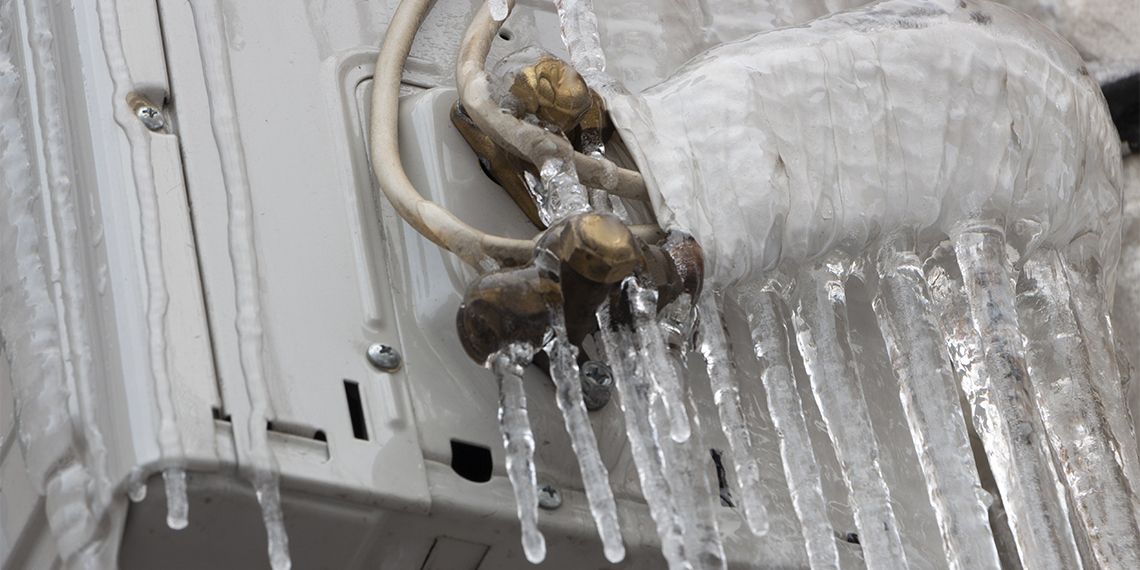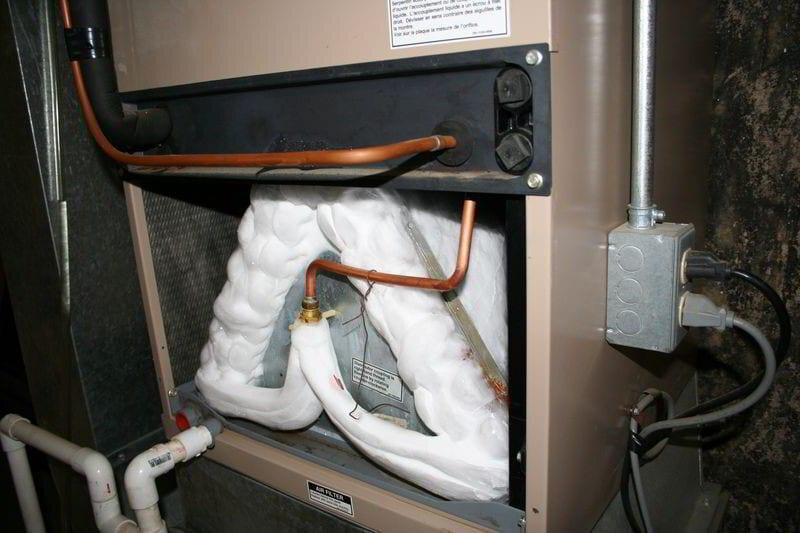Steps to Take If My AC Pipe Is Frozen - Quick Solutions for Unfreezing
Steps to Take If My AC Pipe Is Frozen - Quick Solutions for Unfreezing
Blog Article
What're your ideas about What Causes AC Pipes To Freeze??

Introduction
Finding that your a/c pipe is frozen can be concerning, specifically during warm summertime when you count on your ac system one of the most. Recognizing what to do in such a circumstance is essential to avoid further damage to your cooling system and guarantee your convenience inside.
Comprehending the Causes
Numerous variables can contribute to the cold of an air conditioner pipe. Understanding these causes can help you deal with the issue properly.
Lack of Airflow
One common source of a frozen AC pipe is inadequate air movement. When the air flow over the evaporator coil is limited, it can cause the coil to go down below freezing temperature level, resulting in ice formation on the pipe.
Low Refrigerant Levels
Insufficient cooling agent levels in your air conditioner system can also cause an icy pipe. Low refrigerant levels can cause the pressure in the system to go down, causing the cold of wetness on the evaporator coil.
Winter Conditions
In colder climates, freezing temperature levels outside can contribute to the cold of AC pipelines. If your a/c device is not effectively shielded or if there are leaks in the ductwork, cool air can infiltrate the system, causing the pipeline to ice up.
Dirty Air Filters
Filthy or clogged air filters can limit airflow in your air conditioner system, leading to different problems, consisting of an icy pipeline. It's vital to change or cleanse your air filterings system on a regular basis to make sure correct air movement and stop ice accumulation.
Signs of a Frozen Air Conditioner Pipe
Acknowledging the indications of an icy air conditioner pipe is essential for timely action.
Minimized Airflow
If you notice a substantial decrease in airflow from your vents, it might show a frozen pipeline.
Ice Buildup on the Pipe
Visible ice accumulation on the refrigerant line or the evaporator coil is a clear indicator of a frozen air conditioning pipe.
Odd Sounds from the Unit
Unusual sounds, such as hissing or bubbling, originating from your air conditioning system can signal that there's ice existing on the pipeline.
Immediate Actions to Take
When faced with a frozen AC pipe, it's necessary to act swiftly to avoid more damages to your cooling system.
Turning off the air conditioning
The initial step is to switch off your ac unit to prevent the system from running and worsening the problem.
Looking for Blockages
Examine the location around the indoor system for any obstructions that may be blocking airflow, such as furniture or curtains.
Defrosting the Pipe
You can use mild methods like placing towels soaked in cozy water around the frozen pipe to aid thaw it slowly.
Preventive Measures
Taking preventive measures can assist avoid future incidents of a frozen AC pipeline.
Regular Maintenance Checks
Set up routine upkeep get in touch with a specialist HVAC service technician to guarantee that your air conditioner system is running efficiently.
Altering Air Filters
Frequently change or clean your air filters to prevent air flow restrictions and preserve optimum performance.
Shielding Exposed Pipes
If your air conditioning pipelines are revealed to cold temperatures, take into consideration insulating them to prevent cold during winter months.
Looking For Professional Help
If DIY techniques stop working to deal with the concern or if you're uncertain concerning exactly how to proceed, it's finest to look for support from a certified HVAC professional.
When DIY Methods Fail
If your attempts to thaw the pipe or address various other issues are unsuccessful, it's time to hire an expert.
Relevance of Hiring a Professional HVAC Technician
A certified HVAC service technician has the knowledge and devices necessary to diagnose and repair problems with your a/c system safely and efficiently.
Final thought
Handling a frozen a/c pipeline can be a frustrating experience, but knowing just how to react can help decrease damages and bring back comfort to your home. By understanding the causes, acknowledging the indicators, and taking punctual action, you can efficiently attend to the issue and avoid future incidents.
What to Do If Your AC Line Is Frozen
Make Sure All Supply and Return Air Vents Are Open
If you notice problems with airflow, the first thing you should do is check your supply and return vents. Supply vents distribute clean, conditioned air throughout your home. As this air becomes stale, it’s pulled into the return vent, where it’s reconditioned before being sent back out through the supply vent.
When these vents are closed, air won’t flow in the home. Before examining your AC, check the vents in every room and ensure they’re all open.
Check for a Dirty Air Filter
Another possible cause of limited airflow is a dirty air filter. Your air conditioner’s filters catch elements you don’t want to breathe in, such as dirt and dust. Over time, filters can become clogged, ultimately blocking air from flowing in and out. The lack of airflow can then cause the entire coil to freeze and will completely restrict any air from moving through it. The AC may need to be powered off for one to two days to allow the coil to thaw after replacing the filter to allow proper functioning of the unit. This debris can also accumulate on your AC’s evaporator coil, requiring a more serious repair. In general, air filters should be cleaned regularly (about every two weeks).
Assess Your Outdoor Unit
In addition to checking your AC, assessing the outdoor unit is a good idea. Also known as the condensing unit, it works with your interior unit to release heat outside. An issue with the outdoor unit can result in rising internal temperatures.
Overgrown Shrubs or Clogged Leaves
From leaves and twigs to shrubs and debris, there’s no shortage of outdoor elements that can accumulate around your condensing unit. When these elements get lodged inside the unit, they can block airflow. Fortunately, removing the blockage can solve the problem.
Sounds of a Broken Fan
Shrubs and leaves aren’t the only things that can impede your outdoor unit’s airflow. If the fan is broken, the unit won’t be able to properly get rid of heat — which means the internal temperature won’t go down. First, make sure the fan is spinning. If it is, check for the following sounds of a broken fan:
Buzzing Rattling Screeching Hissing Clicking Preventative Measures
Nobody wants to deal with a frozen AC line. In addition to causing problems with your air conditioner, they require professional repairs. On the bright side, there are preventative measures you can take to help ensure this issue doesn’t arise in the first place.
https://www.coopergreenteam.com/blog/what-to-do-if-ac-line-frozen

I am very intrigued by How can I fix an air conditioner’s frozen pipe? and I'm hoping you enjoyed reading the entire post. Appreciated our review? Please share it. Help someone else check it out. Thanks so much for taking the time to read it.
Free Estimates Report this page